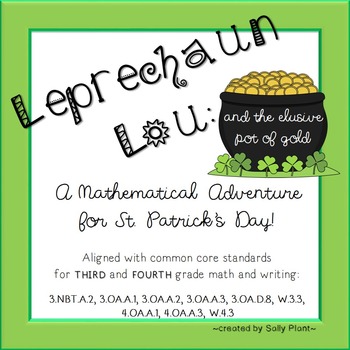Leprechaun Math and Language Adventure
- PDF
Description
In this leprechaun math and language arts activity, perfect for St. Patrick's Day, students will read the adventure of Leprechaun Lou. Lou is a leprechaun on a search for his own pot of gold. Math problems, which the students will solve after reading the story, are hidden within! After completing the math portion, students will write an ending in which they solve Leprechaun Lou's final dilemma...
Included in this packet:
*Leprechaun Lou and the Elusive Pot of Gold
*Two pages of math problems to solve
*A writing activity in which students solve Lou's problem
I would LOVE to have your feedback on this product!
How to get TPT credit to use on future purchases:
• Please go to your My Purchases page (you may need to log in). Beside each purchase you’ll see a Provide Feedback button. Simply click it and you will be taken to a page where you can give a quick rating and leave a short comment about the product. I very much value your feedback. It helps me determine what is useful for you or what I might improve about the product so I can continue creating quality materials for my fellow teachers.
Be the first to know about my sales, freebies, giveaways, and new products by following me:
• Look for the green star near the top of any page within my store and click it to become a follower. You will then receive customized email updates about my store.
Enjoy!




